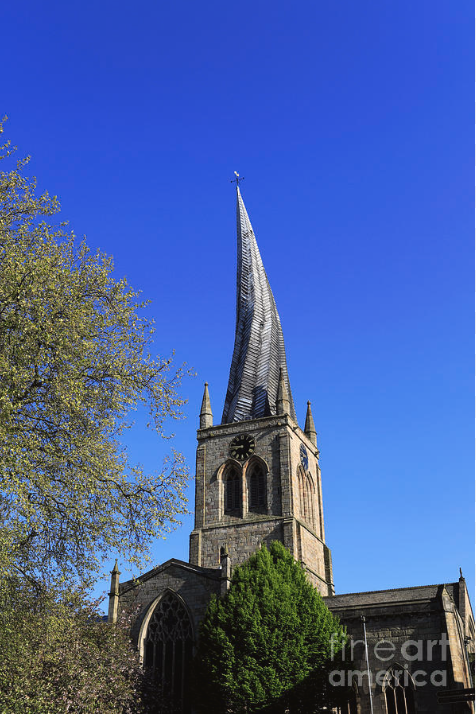-
Posts
3,909 -
Joined
-
Last visited
Content Type
Profiles
Forums
Gallery
Events
Everything posted by KeithAug
-

Colchester Smack by Colin B
KeithAug replied to Colin B's topic in - Build logs for subjects built 1851 - 1900
The deck is looking very authentic. Good progress.- 13 replies
-
- Working sail
- Plank on Frame
-
(and 1 more)
Tagged with:
-
Eberhard / Keith - I guess you would be a little twisted if you were that old. The spire The most recognisable part of the Parish Church, its adopted name, is of course the Crooked Spire, constructed in 1362. However, the spire certainly is not crooked. It is twisted and leaning, but not crooked. Historians have suggested a number of factors for this - the use of unseasoned wood, a lack of skilled labour, the later use of heavy lead sheeting in the 17th century. Many have tried to explain what makes the spire twist and many have disagreed as to the real reason. Perhaps we shall never know for sure. But the myth I like the best is - A virgin once went to the church to get married and the spire was so amazed it turned round to have a look. It’s going to turn back when it sees the next one.
-
Too simple. I liked the rats nest of wires. I don't understand any of it but it is mightily impressive.
-
You had a successful career then Phil. We are all indebted to you!
- 422 replies
-
- minesweeper
- Cape
-
(and 1 more)
Tagged with:
-
Phil - I need one of those for personal use. When I get out of bed in the morning and hobble across the bedroom floor I often contemplate my final journey to the scrapyard in the sky. Were they the ones trained as swimmers and armed with a big hammer? I do like Churchills quotes, my favourites are:- 1 “I may be drunk, Miss, but in the morning I will be sober and you will still be ugly.” 2 Lady Astor to Churchill: “If I were married to you, I’d put poison in your coffee.” Reply: “If I were married to you, I’d drink it.”
- 422 replies
-
- minesweeper
- Cape
-
(and 1 more)
Tagged with:
-
Gary - it had just been washed and was drying on the counter top so I didn't have to go looking. In actual fact the full story is that in theory it is mine. My wife bought it for me as a Christmas Present one year because she needed it. She is very good to me. Rick - the advantage comes at the plank ends which press down hard. If you have under bent planks then pulling the ends down can be a bit problematic if the hull geometry makes clamping tricky. Paul - I am basically lazy so I spend a lot of time thinking about the easiest way. I always feel uplifted when someone on the forum inspires me with a new trick that makes things easier.
-
This looks very interesting Phil. Your comment reminds me of a Churchill quote. “He is a very modest man, with much to be modest about”.
- 422 replies
-
- minesweeper
- Cape
-
(and 1 more)
Tagged with:
-
Druxey, yes Sussex is beautifully rural and green. You don’t get the glow of blast furnaces in Yorkshire any more. Just the lights from the shopping centres that now occupy their former sites. Tom, I find over bending and then allowing the hull to straighten the plank a little makes the plank nest better while glueing. Phil - Fortunately my wife is Welsh. The Welsh are not really noted for their tolerance but fortunately they do spend a lot of time out shopping. Keith, John , Pat - thank you as ever for your continuing support. Keith,
-
Thank you Andrew, Ian and Druxey. Andrew - I come from Thurnscoe, Near Barnsley. I grew up climbing and sledging down the slag heaps but that was in the good old days before the mines closed. It went rapidly downhill after that which is quite a trick noting its lowly starting point. We always thought Knaresborough was very posh, only visited on rare charabanc trips that always seemed manage a return route via Harry Ramsdens. I escaped aged 16 when I left home and haven't lived in Yorkshire since. My ambition was to retire to Harrogate, sadly not to be.
About us
Modelshipworld - Advancing Ship Modeling through Research
SSL Secured
Your security is important for us so this Website is SSL-Secured
NRG Mailing Address
Nautical Research Guild
237 South Lincoln Street
Westmont IL, 60559-1917
Model Ship World ® and the MSW logo are Registered Trademarks, and belong to the Nautical Research Guild (United States Patent and Trademark Office: No. 6,929,264 & No. 6,929,274, registered Dec. 20, 2022)
Helpful Links
About the NRG
If you enjoy building ship models that are historically accurate as well as beautiful, then The Nautical Research Guild (NRG) is just right for you.
The Guild is a non-profit educational organization whose mission is to “Advance Ship Modeling Through Research”. We provide support to our members in their efforts to raise the quality of their model ships.
The Nautical Research Guild has published our world-renowned quarterly magazine, The Nautical Research Journal, since 1955. The pages of the Journal are full of articles by accomplished ship modelers who show you how they create those exquisite details on their models, and by maritime historians who show you the correct details to build. The Journal is available in both print and digital editions. Go to the NRG web site (www.thenrg.org) to download a complimentary digital copy of the Journal. The NRG also publishes plan sets, books and compilations of back issues of the Journal and the former Ships in Scale and Model Ship Builder magazines.





